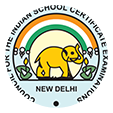GreenDot International School is affiliated with the Council for the Indian School Certificate Examinations (CISCE), committed to nurturing India’s youth through high-quality educational endeavors. We aim to foster a humane, just, and inclusive society by offering engaging learning experiences that drive excellence.
Recognizing the evolving trends in education, GreenDot International School provides a holistic, broad-based curriculum addressing all aspects of child development. Our child-centered, theme-based curriculum is designed to support lifelong learning and prepares students to face life’s challenges.
GreenDot Primary Years Programme channels children’s natural curiosity into an inquiry-based curriculum that builds foundational skills in reading, writing, problem-solving, and technology use. With a dynamic blend of languages, mathematics, science, and social studies, our interdisciplinary approach creates an enriching and engaging learning environment. Through diverse co-curricular activities, we foster confidence, communication, and practical skills to inspire a lifelong love for learning.
Our Middle Years Programme is crafted to support students’ intellectual and personal growth. Emphasizing critical thinking, collaboration, and reflection, our curriculum covers English, Hindi/Kannada, mathematics, science, history, geography, and computer science. Research projects, presentations, and teamwork-based activities encourage deep understanding and holistic development.
The Secondary Programme prepares students for future academic and career success. Following ICSE standards, we offer specialized subjects in science and economics, designed to meet competitive exam and global market demands. At GreenDot, we guide students to become confident, capable young adults ready for future challenges.
Classes I & II
Subjects include English, Second Language, Mathematics, Environmental Studies (EVS), Computer Studies, and Arts Education.
Classes III to X
Subjects expand to include Science (Physics, Chemistry, Biology), Social Studies, Computer Studies, and options in the upper grades under Groups I, II, and III.
Additional offerings at primary and upper primary levels include a Third Language (Class V–VIII), Physical Education/Yoga, Moral and Spiritual Values Education, and Socially Useful Productive Work and Community Service (SUPW).
At GreenDot School, assessment and evaluation are foundational to supporting student growth.
Assessment identifies learning strengths, gaps, and challenges, utilizing diverse methods like oral and written responses, observations, discussions, projects, and hands-on activities.
Evaluation, in turn, measures comprehensive progress over time, assessing knowledge, skills, interests, and values against set criteria to provide grades or marks. Our program includes entry-level assessments, regular evaluations, and informal tools, like the “Star of the Month” award, to offer a well-rounded view of each child’s development and potential.
Aligned with the National Education Policy (NEP), our holistic approach cultivates independent, capable students through a practical and modern curriculum designed for life readiness beyond school.
GreenDot’s integrated sessions for Grades 1-7 blend science, arts, mathematics, and technology to build 21st-century skills like critical thinking and problem-solving. With programs like Mindspark for Math and English and ThinkTac for Science, we encourage real-world application and hands-on learning.

Meet Us On Social:





